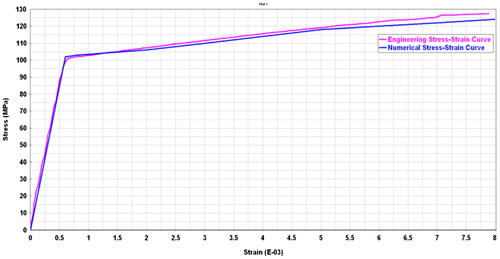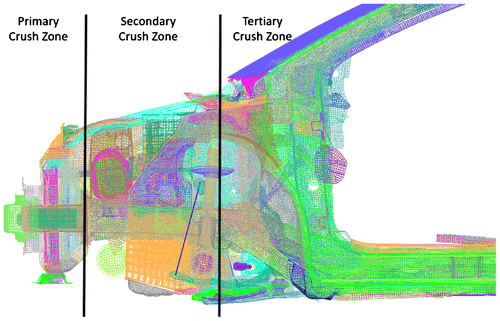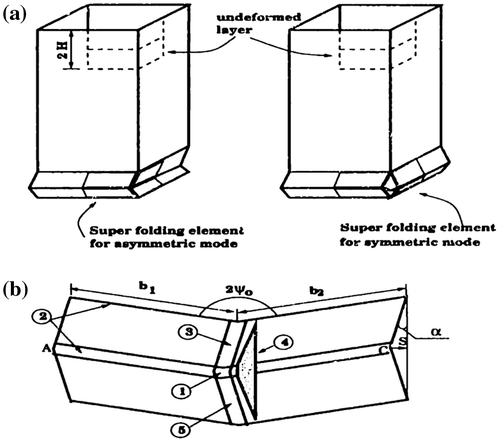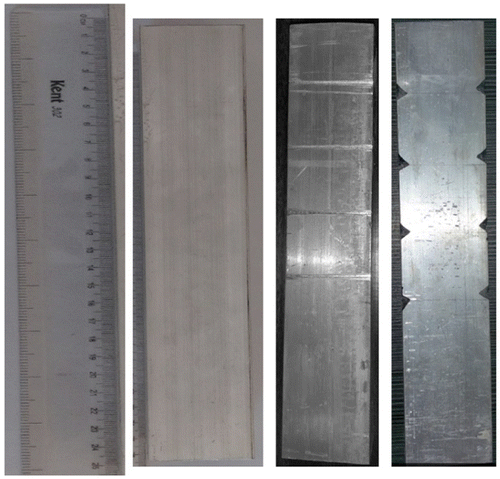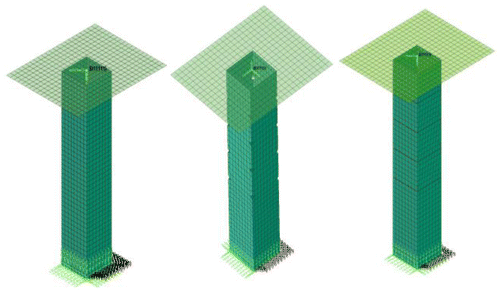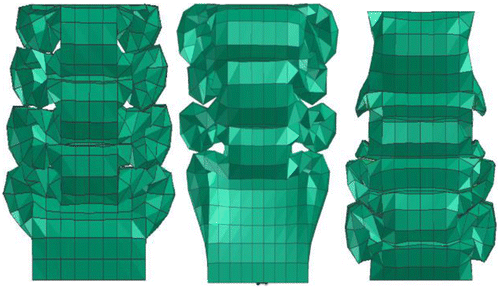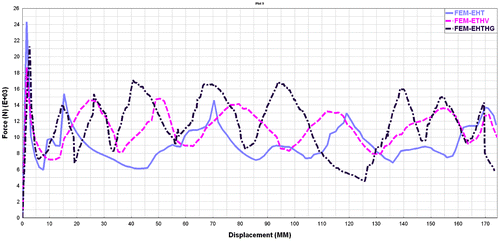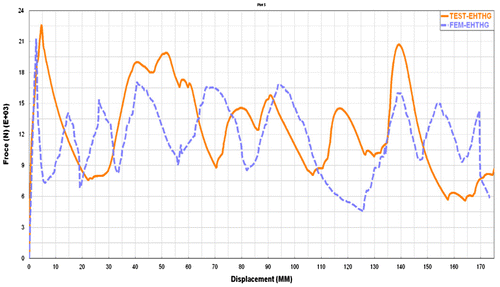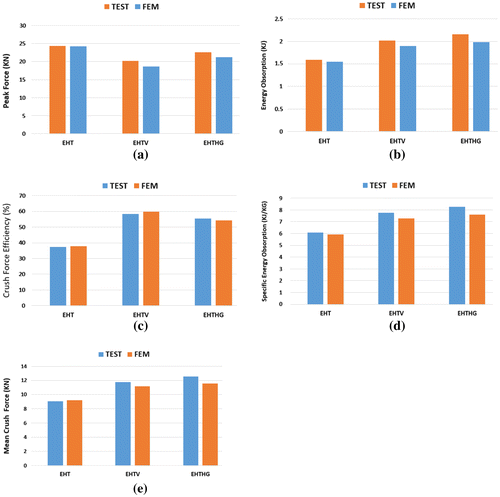Figures & data
Table 1. Chemical composition of Al6063 aluminium alloy
Figure 4. (a) Empty hollow tube (EHT), (b) Empty hollow tube V-notch (EHTV) and (c) Empty hollow tube horizontal groove (EHTHG).
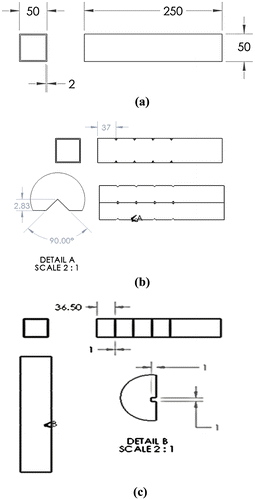
Table 2. Physical material properties of Al6063 alloy
Figure 7. (a) Force–displacement curve and (b) Deformation modes of EHT, EHTV and EHTHG specimens with 5 mm/min.

Figure 8. (a) Force–displacement curve and (b) Deformation modes of EHT, EHTV and EHTHG specimens with 3.06 mm/s.

Table 3. Experimental results of EHT, EHTV and EHTHG for 5 mm/m
Table 4. Experimental results of EHT, EHTV and EHTHG for 3.06 mm/s
Figure 9. (a) Peak force (Pmax), (b) Energy absorption (EA), (c) Specific energy absorption (SEA), (d) Mean crush force (Pm) and (e) crush force efficiency (CFE) of EHT, EHTV and EHTHG specimens for 3.06 mm/s feed rate.
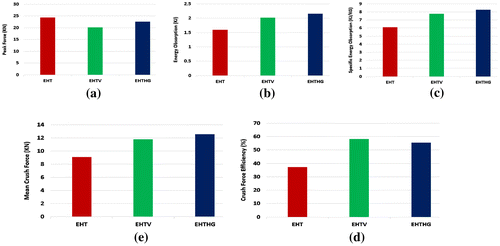
Figure 11. Comparison of engineering stress-strain curve from tensile test with numerical modelling curve.
